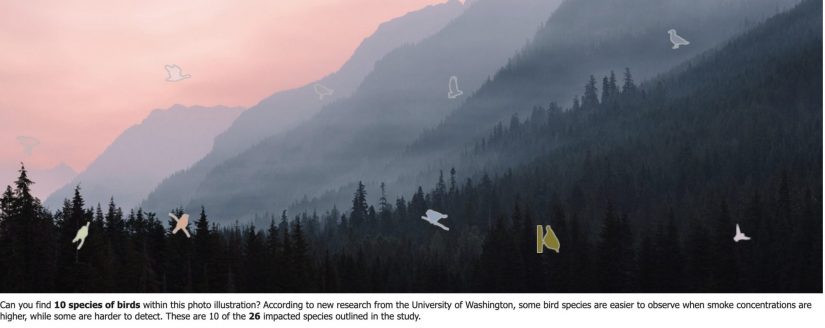When the wildfire smoke arrives, where do the birds go?

Most Washingtonians know wildfire smoke is here to stay, and researchers are wondering what happens to the birds when the smoke takes over the skies.
UW School of Environmental and Forest Sciences researchers are among the first to study the impact of wildfire smoke on common birds. Their work was recently published in the journal Ornithological Applications and was profiled by UW News.
They found that smoke affected the ability to detect more than a third of the bird species studied in Washington state over a four-year period. Sometimes smoke made it harder to observe birds, while other species were actually easier to detect when smoke was present.
The researchers combined data from eBird, an online citizen-science program managed by the Cornell Lab of Ornithology, with publicly available data from an extensive network of air quality monitors across Washington state. They were able to analyze how fine particulate matter, known as PM2.5 and a marker of smoke pollution, affected the probability of observing 71 common bird species during the wildfire seasons of 2015 to 2018. Higher concentrations of smoke affected the chances of observing 37%, or 26, of the bird species included in the study.
“We want to know how wildfire smoke affects birds and other wildlife, and this study is a great place to start,” said lead author Olivia Sanderfoot, a doctoral candidate at SEFS, told UW News. “Smoke clearly has an impact on detection of wildlife, and that hasn’t been adequately explored in the literature to date. Now we know that smoke pollution specifically affects our observations of birds and our ability to detect them.”
Read the entire story at the UW News website here.